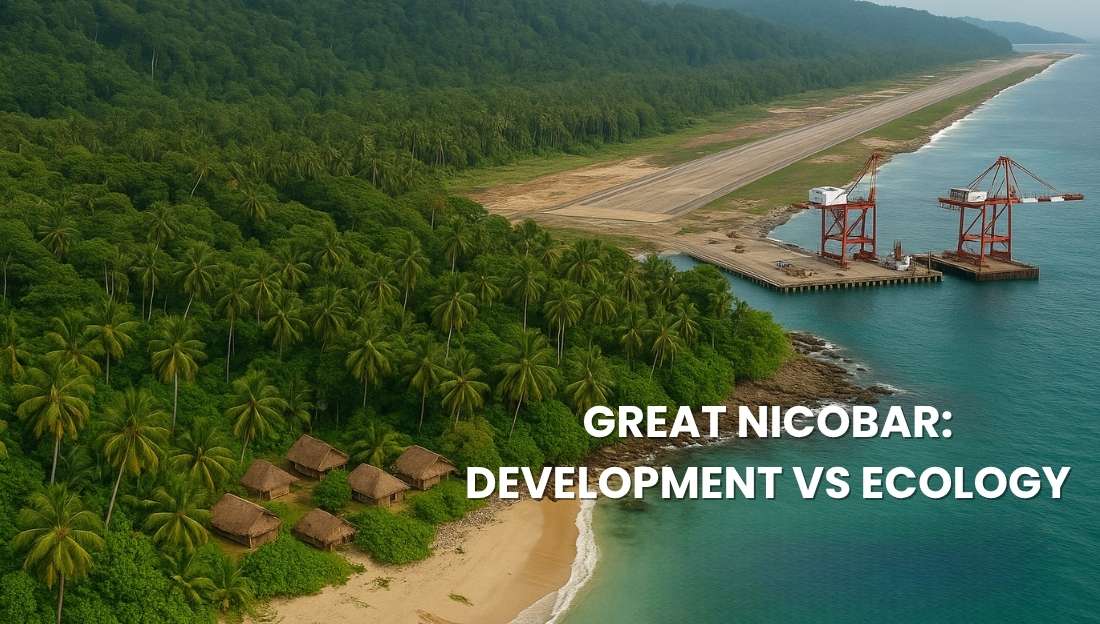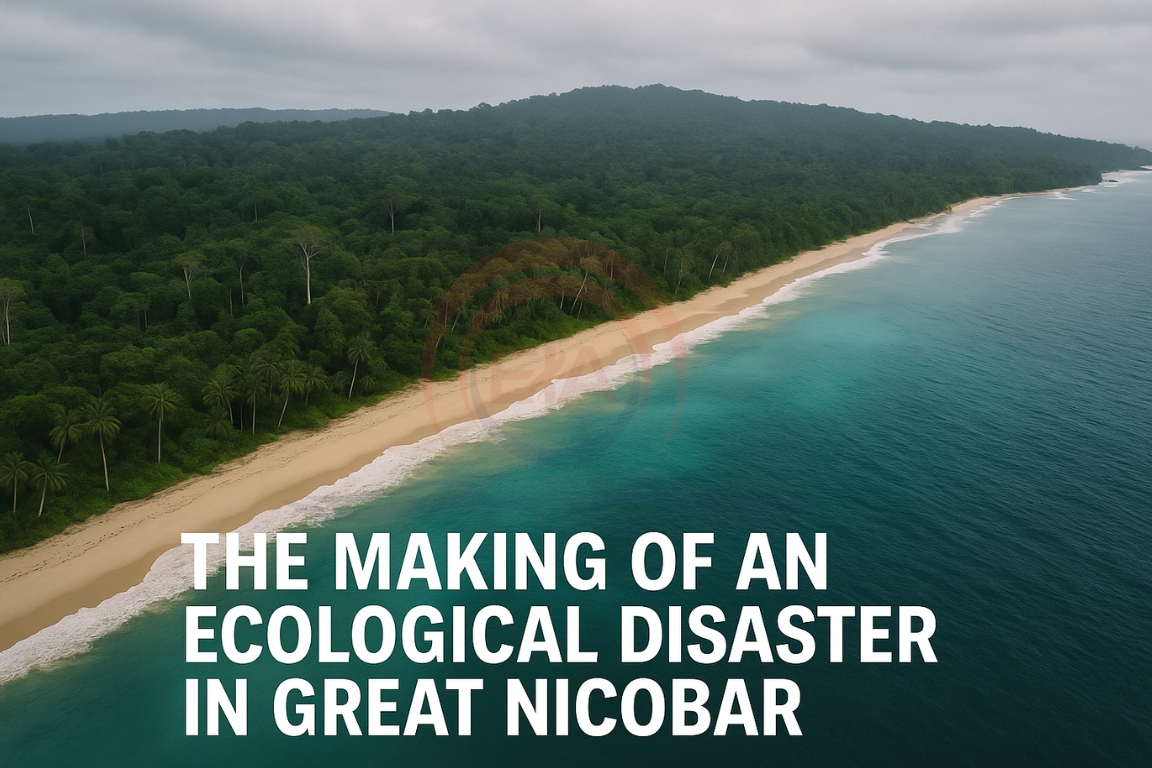The Great Nicobar Island mega-infrastructure project has moved a step forward as the A&N administration prepared GIS maps for denotification and renotification of tribal reserve land. This comes amid legal challenges related to Forest Rights Act (FRA), 2006 compliance and tribal protection.
Background
- Great Nicobar project cost: ₹92,000 crore
- Key components: International trans-shipment port, Airport, Township, Power plant
- Implementing agency: ANIIDCO (Andaman & Nicobar Islands Integrated Development Corporation)
- Tribal group affected: Shompen tribe (Particularly Vulnerable Tribal Group – PVTG)

Land Denotification Process
- GIS-based map prepared to denotify and re-notify tribal reserve areas.
- Consultation ongoing with: Assistant Commissioner, Campbell Bay, Andaman Adim Janjati Vikas Samiti (tribal welfare body)
Forest Rights Clearance
- Denotification requires settlement of forest rights under FRA, 2006.
- Claims of settled rights challenged in Calcutta High Court.
- Court reviewing whether proper consent and rights recognition followed.
Infrastructure Preparation
- Transit accommodation for project workers completed.
- Tower locations for communication infrastructure to be finalised soon.
- Comprehensive Tribal Welfare Plan expected next month.
Environmental Concerns
- Loss of dense forest, rich biodiversity and coastal ecosystems.
- Project located in seismically active & tsunami-prone zone.
Tribal Rights
- Risk of displacement and cultural disruption of the Shompen tribe.
- Need for meaningful consultation and lawful settlement of rights.
Legal & Policy Challenges
- Appeals against environmental and forest clearances ongoing.
- FRA compliance under scrutiny.
Significance
- Aims to boost India’s maritime and strategic presence in Indian Ocean.
- Could transform Great Nicobar into a major global shipping & logistics hub.
- Also tests balance between development, environment, and tribal rights.
This topic is available in detail on our main website.





